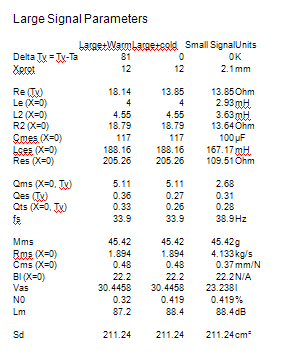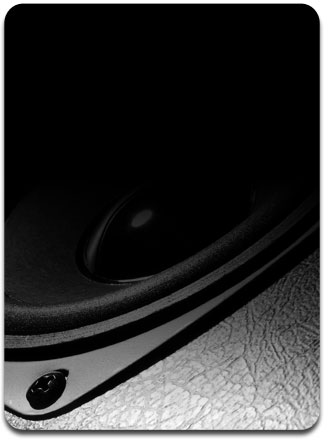Klippel LSI - Large Scale Parameter Testing
 At higher amplitudes, loudspeakers produce substantial distortion in the output signal, generated by nonlinear ties inherent in the transducer. The dominant nonlinear distortions are predictable and are closely related with the general principle, particular design, material properties and assembling techniques of the transducer. The distortion analyzer combines nonlinear measurement techniques with elaborate computer simulation to explain the generation of the nonlinear distortions, identify their physical causes and give suggestions for constructional improvements. Better insight into the nonlinear mechanisms makes it possible to further optimize the transducer in respect with sound quality, weight, size and cost. The results of this test help to identify: Peak Displacement (Xmax for BL, Compliance, and Inducation), more accurate prediction of parameters at working levels, relative balance of the Magnetic and Mechanical nonlinearities, and good approximation of thermal limits.
At higher amplitudes, loudspeakers produce substantial distortion in the output signal, generated by nonlinear ties inherent in the transducer. The dominant nonlinear distortions are predictable and are closely related with the general principle, particular design, material properties and assembling techniques of the transducer. The distortion analyzer combines nonlinear measurement techniques with elaborate computer simulation to explain the generation of the nonlinear distortions, identify their physical causes and give suggestions for constructional improvements. Better insight into the nonlinear mechanisms makes it possible to further optimize the transducer in respect with sound quality, weight, size and cost. The results of this test help to identify: Peak Displacement (Xmax for BL, Compliance, and Inducation), more accurate prediction of parameters at working levels, relative balance of the Magnetic and Mechanical nonlinearities, and good approximation of thermal limits.
Example Test
Example Test
For more information see:
Loudspeaker Nonlinearities - Causes and Symptoms
Assessing Large Signal Performance of Loudspeakers
Prediction of Speaker Performance at High Amplitudes
Credibility of Nonlinear Parameters

